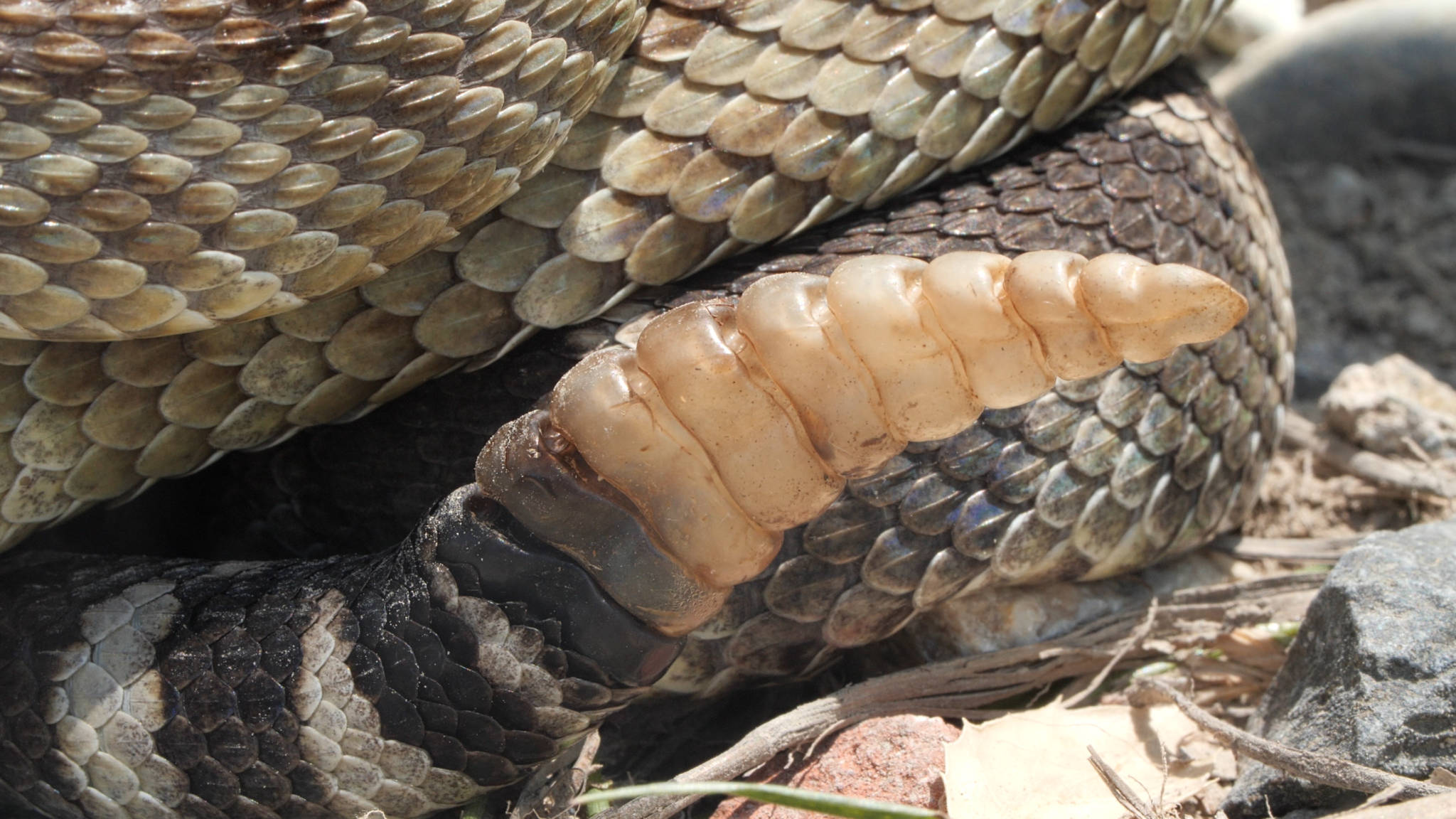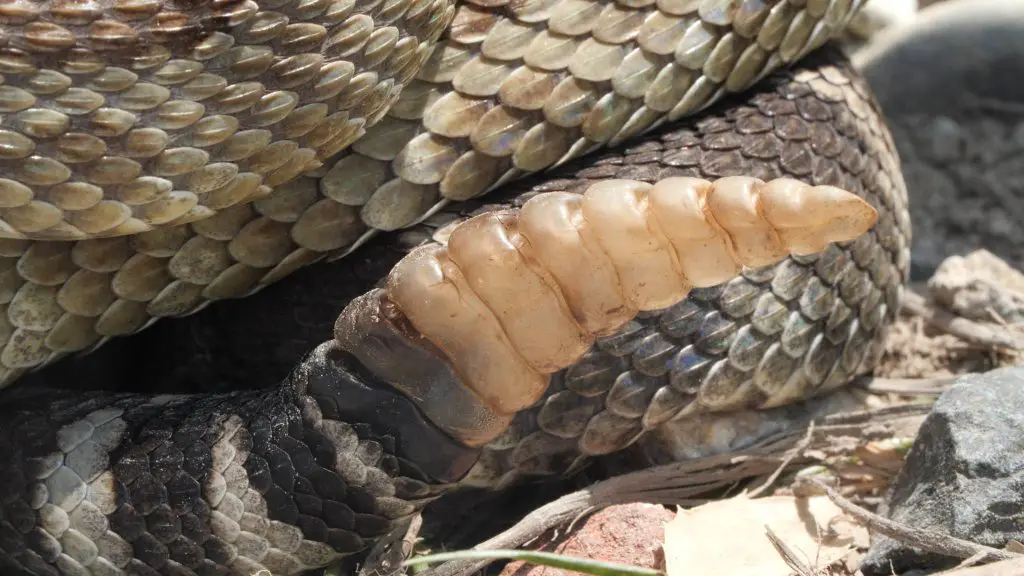The sound of a rattlesnake’s rattle is unmistakable. But have you ever wondered if those rattles are poisonous? It’s a common question among hikers and outdoor enthusiasts who may come across these venomous creatures in the wild. In this article, we’ll take a closer look at the anatomy of a rattlesnake and explore the truth behind its rattles.
Rattlesnakes are fascinating creatures that are both feared and admired. Their unique rattle has been the subject of curiosity and speculation for centuries. But while the sound of a rattlesnake may be intimidating, it’s important to understand the true nature of these snakes and the potential danger they pose. So, let’s dive in and answer the question: are the rattles on a rattlesnake poisonous?
The rattles on a rattlesnake are not poisonous. The venom of the rattlesnake is contained in its fangs and injected through a bite. The rattles serve as a warning device to potential predators and other threats.

Are the Rattles on a Rattlesnake Poisonous?
Rattlesnakes are known for their venomous bites, but what about their rattles? Do they pose any danger to humans or animals? In this article, we will explore whether the rattles on a rattlesnake are poisonous or not.
What are Rattlesnake Rattles Made of?
Rattlesnake rattles are made of a hard, keratin-like substance that is similar to our fingernails. The rattles are located at the end of the snake’s tail and are made up of several interlocking segments. When the snake moves its tail, the segments rub against each other, producing the distinctive rattling sound.
While the rattles themselves are not poisonous, they are a warning sign that the snake is nearby and should be avoided. Rattlesnakes use their rattles to warn potential predators or threats to stay away. If you hear a rattling sound, it’s best to move away slowly and give the snake plenty of space.
What Happens When a Rattlesnake Loses its Rattles?
Rattlesnakes can lose their rattles through shedding or damage. When a rattlesnake sheds its skin, the segments of the rattle may break off, causing the snake to have a shorter rattle or no rattle at all. Additionally, if a rattlesnake’s tail is damaged, the rattles may fall off, reducing its ability to produce the characteristic sound.
However, even if a rattlesnake has lost its rattles, it is still venomous and should be avoided. In fact, a rattlesnake without a rattle may be even more dangerous because it cannot warn potential threats to stay away.
What Should You Do if You Encounter a Rattlesnake?
If you encounter a rattlesnake, it’s important to stay calm and give the snake plenty of space. Do not try to approach or handle the snake, as this can provoke it and increase the risk of a bite. Additionally, do not try to kill the snake, as this is unnecessary and can be dangerous.
Instead, move away slowly and carefully, keeping an eye on the snake’s movements. If you are hiking in an area known to have rattlesnakes, it’s a good idea to wear protective clothing, such as long pants and boots, and to carry a snakebite kit in case of emergency.
Rattlesnake Venom: The Real Danger
While the rattles on a rattlesnake are not poisonous, the snake’s venom definitely is. Rattlesnake venom is a complex mixture of proteins and enzymes that can cause a range of symptoms, from mild swelling and pain to severe tissue damage and organ failure.
If you are bitten by a rattlesnake, it’s important to seek medical attention immediately. Do not try to suck out the venom or apply a tourniquet, as these methods are ineffective and can actually make the situation worse.
Instead, stay calm and immobilize the affected limb, keeping it below heart level if possible. Call 911 or go to the nearest emergency room as soon as possible. With prompt medical treatment, most people recover fully from a rattlesnake bite.
Rattlesnake Rattles: A Fascinating Adaptation
While the rattles on a rattlesnake may not be poisonous, they are still a fascinating adaptation that has evolved over millions of years. The rattles serve as a warning to potential predators and threats, allowing the snake to avoid confrontation and stay safe.
In addition, rattlesnake rattles are a unique example of how animals have adapted to their environment in order to survive. By studying these adaptations, scientists can learn more about the complex interactions between different species and their environment.
Overall, while the rattles on a rattlesnake may not be poisonous, they are still an important warning sign to be aware of. By staying alert and giving these fascinating creatures the respect they deserve, we can coexist safely and peacefully with one of nature’s most iconic animals.
Frequently Asked Questions
Here are some common questions people have about rattlesnakes and their rattles:
What are rattlesnake rattles made of?
Rattlesnake rattles are made of keratin, which is the same material that makes up human hair and fingernails. The rattles are hollow, and each time the snake sheds its skin, a new segment is added to the rattle.
Contrary to popular belief, the number of segments on a rattlesnake’s rattle does not indicate its age. A rattlesnake can shed its skin several times in a year, and each time a new segment is added to the rattle.
Do all species of rattlesnakes have rattles?
No, not all species of rattlesnakes have rattles. Some species, such as the Mojave rattlesnake, have very small, difficult-to-hear rattles. Other species, such as the timber rattlesnake, have very distinct, loud rattles.
Some species of snakes that are not rattlesnakes may also produce a rattling sound by shaking their tails, but these sounds are not produced by a true rattle.
Are the rattles on a rattlesnake poisonous?
No, the rattles on a rattlesnake are not poisonous. The venom of a rattlesnake is produced in glands located in its head and is delivered through its fangs when it bites. The rattles on its tail serve as a warning to potential predators, letting them know that the snake is nearby and should be avoided.
It is important to note that even if a rattlesnake has lost its rattles, it is still capable of delivering a venomous bite and should be avoided at all costs.
Can a rattlesnake control its rattles?
Yes, a rattlesnake can control its rattles. When a rattlesnake feels threatened, it will shake its tail, causing the segments of the rattle to vibrate against each other and produce a rattling sound. The snake can also control the frequency and intensity of the rattling sound.
Some species of rattlesnakes may also use their rattles in a non-threatening manner, such as during courtship displays or to communicate with other snakes in their vicinity.
What should I do if I encounter a rattlesnake?
If you encounter a rattlesnake, it is important to give the snake plenty of space and avoid disturbing it. Rattlesnakes are generally not aggressive and will only bite if they feel threatened.
If you are hiking in an area known to have rattlesnakes, be sure to wear sturdy boots and watch where you step. If you do get bitten by a rattlesnake, seek medical attention immediately. Do not attempt to suck out the venom or make any cuts near the bite wound, as this can make the situation worse.
How do Rattlesnake Rattles Make Sound?
In conclusion, it is essential to understand that the rattles on a rattlesnake are not poisonous. They are merely a warning signal to indicate the presence of a dangerous predator. However, it is important to note that rattlesnakes are venomous, and their bites can be fatal if left untreated.
While the sound of a rattlesnake’s rattle may be alarming, it is vital to remain calm and keep a safe distance from the snake. If you encounter a rattlesnake in the wild, it is best to back away slowly and give the snake plenty of space to retreat.
In summary, while the rattles on a rattlesnake are not poisonous, it is still crucial to exercise caution and respect when encountering these venomous predators. By taking the necessary precautions and staying informed about the behavior of these snakes, we can coexist with these fascinating creatures safely.


